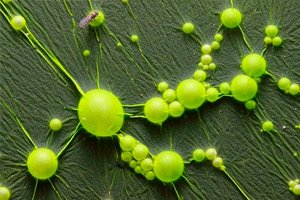
All iLive content is medically reviewed or fact checked to ensure as much factual accuracy as possible.
We have strict sourcing guidelines and only link to reputable media sites, academic research institutions and, whenever possible, medically peer reviewed studies. Note that the numbers in parentheses ([1], [2], etc.) are clickable links to these studies.
If you feel that any of our content is inaccurate, out-of-date, or otherwise questionable, please select it and press Ctrl + Enter.
Microplastics in rivers spread antibiotic-resistant microbes
Last reviewed: 02.07.2025
 ">
">In a recent study published in the journal Nature Water, scientists examined virus distribution, host interactions, and transfer of antibiotic resistance genes (ARGs) on microplastics using metagenomic and viome sequencing.
Persistent microplastic contamination is a defining feature of the Anthropocene, posing environmental and public health risks through toxic leaching and direct penetration into biological tissues. Microplastics create unique niches for microbial colonization and biofilm growth, forming a “plastisphere” comprising diverse microbial communities. These surfaces can selectively enrich pathogens, potentially impacting disease transmission. Despite their ubiquity, viruses have been largely ignored in plastisphere studies, although recent evidence suggests that they persist on microplastics and interact with bacterial hosts. More research is needed to fully understand the ecological impacts of viral communities and ARG transmission on microplastics, as well as their implications for the environment and human health.
In March 2021, a study was conducted on two types of microplastics, polyethylene (PE) and polypropylene (PP), in the Beilong River in Guangxi Province, China. Five sites along the river were selected based on the urbanization level and physicochemical properties, ranging from rural to urban regions. At each site, 2.0 g of microplastics (PE and PP) and natural particles (stone, wood, sand) were cultured in river water. Microplastics were disinfected with 70% ethanol and washed with sterile water, while natural particles were sterilized to eliminate original bacterial and viral communities. The incubation duration was based on previous studies showing successful biofilm formation on plastics within 30 days.
Following incubation, microplastics, natural particles and water samples were collected and stored at -20°C for analysis. Large particles and herbivores were filtered out and metal concentrations were determined using inductively coupled plasma optical emission spectrometry. Additional physicochemical properties and urbanisation levels were measured.
DNA was extracted using the FastDNA Spin kit and sequenced on the HiSeq X platform. High-quality reads were processed to predict open reading frames and remove redundant genes. Bacterial genomes were assembled and annotated using various bioinformatics tools. Viral DNA was extracted, enriched, and sequenced to identify viral contingents and potential viral clusters on microplastics.
Using metagenomic sequencing, a total of 28,732 bacterial species were identified in microplastic samples from the Beilong River Basin. The dominant phyla were Proteobacteria, Acidobacteria, Actinobacteria, and Chloroflexi, accounting for 52.6% of the bacterial community. Species richness and evenness showed no significant differences by site or microplastic type. The core bacterial community, consisting of 25,883 species, accounted for 78.4% of the total species detected, with 12,284 species common to all samples except one PE sample. The majority of species (28,599) were common to PE and PP microplastics, with 49 and 84 species unique to PE and PP, respectively.
Approximately 0.32% of bacterial species were potential pathogens, with 91 species detected in 11 phyla. The dominant pathogens were Burkholderia cepacia (13.29%), Klebsiella pneumoniae (10.21%), and Pseudomonas aeruginosa (7.59%). A significant distance-day effect was found in the similarity of microbial communities between sites (R2 = 0.842, P < 0.001). NMDS analysis showed differences in bacterial community structure between PE and PP microplastics.
For viral communities, 226,853 counts were obtained, mostly less than 1,000 kb. Myoviridae and Siphoviridae dominated, accounting for 58.8% of viral abundance. Viral richness and evenness did not differ significantly between microplastic types. Viral counts were classified into 501 genera, of which 364 were common to PE and PP. A significant distance-day effect was found in viral communities between sites. NMDS analysis showed differences in viral communities between PE and PP microplastics.
An annotation of the functional genes of bacterial and viral sequences on microplastics was performed using various databases. Most of the viral genes were unclassified or poorly characterized, some of them were related to genetic information processing and cellular processes. Bacterial functional genes were also unclassified, some of them were related to metabolic pathways and biosynthesis. Metal resistance genes (MRGs) and ARGs were found in viral and bacterial sequences, the most common were resistance to Cu, Zn, As and Fe.
Bacterial ARGs primarily encoded resistance to multiple drugs, macrolides, lincosamides, and streptogramins (MLS), and tetracycline, while viral ARGs included resistance genes to trimethoprim, tetracycline, and MLS. Horizontal transfer of ARGs and MRGs was observed between viruses and their bacterial hosts, indicating potential genetic exchange promoting microplastics.
The study found differences in bacterial and viral communities colonizing microplastics compared to natural particles in the Beilun River. Although diversity remained similar across sites, the type of microplastic influenced community composition. Importantly, the researchers identified potential pathogens and ARGs associated with bacteria and viruses on microplastics. They observed evidence of horizontal gene transfer between viruses and bacteria, suggesting that microplastics may contribute to the spread of antimicrobial resistance in aquatic environments. These findings highlight the potential environmental and public health risks associated with microplastic pollution.
